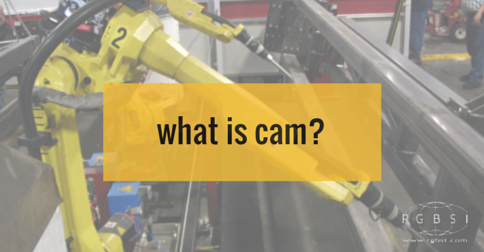
This post is wraps up our series on debunking the acronyms of our business. Read our posts on CFD, PPAP, CAD and FEA to learn more about what those acronyms mean.
Since the Industrial Revolution, manufacturing has undergone radical changes. Perhaps the most dramatic of these changes was the introduction of CAM, computer-aided manufacturing.
To the non-engineering or non-manufacturing community, CAM isn't the a widely known piece of jargon. CAM can refer to the use of computer software to control machine tools and machinery, or may refer to the use of a computer to assist in all operations of a manufacturing plant.
Beginning in the 1950s, engineers began developing CAM for use in manufacturing plants. By The 1970s, it was used by many large manufacturers. Now, in the 21st century, CAM is a significant part of the manufacturing process in many industries.
Through CAM, a factory can become highly automated and regulated. In CAM, computer software is used to create detailed instructions for machinery. The software and machinery work together using numerical control applications that include precise measurements. Due to this precision, the manufacturing process can be repeated over and over again to the exact same specifications, something that is impossible with hand-controlled tools.
Computer-aided manufacturing is usually linked to computer-aided design. A computer takes the computer-generated design developed by a CAD designer and feeds it directly into the manufacturing system. Then, the design is converted into multiple computer controlled processes.
The main advantage of computer-aided manufacturing is that products can be easily customized in small batches. Because it's easy to customize using computer designs and software, rapid design changes can be accomodated. Automatic controls of the CAM system make it easy to adjust the machinery automatically for each order.
Computer-aided manufacturing doesn't mean people are completely cut out of the manufacturing industry. Robotic machines in factory still require human workers, however their jobs change. Now, humans are needed for set-up, quality control, designs, and maintenance, rather than just repetitive tasks.
Source: http://www.wisegeek.org/what-is-computer-aided-manufacturing.htm










